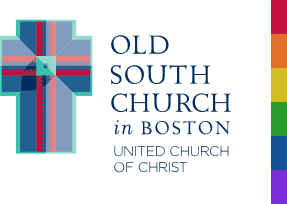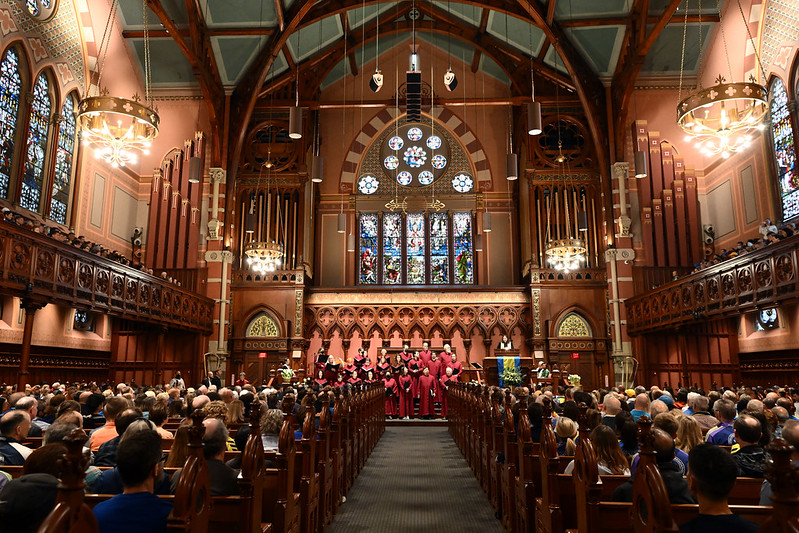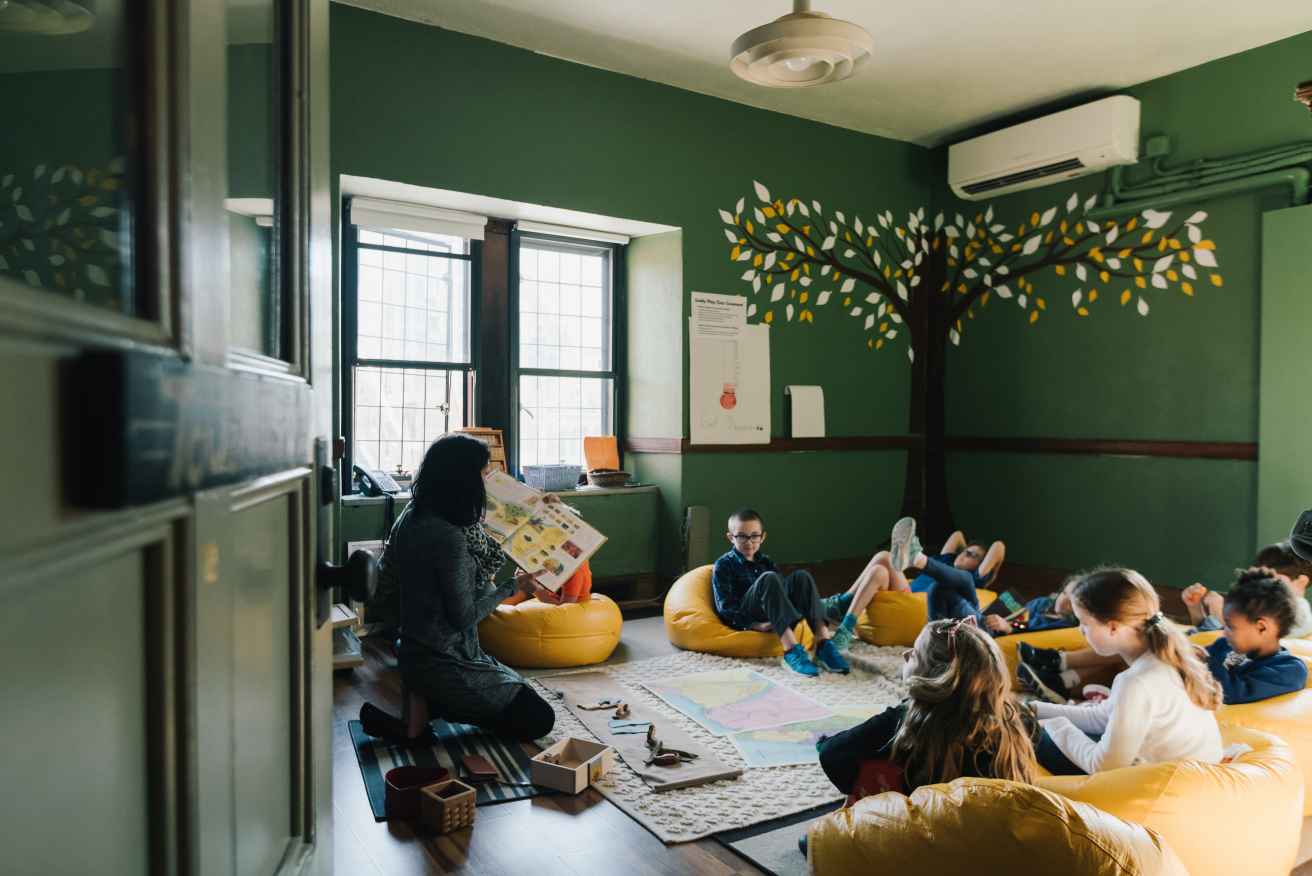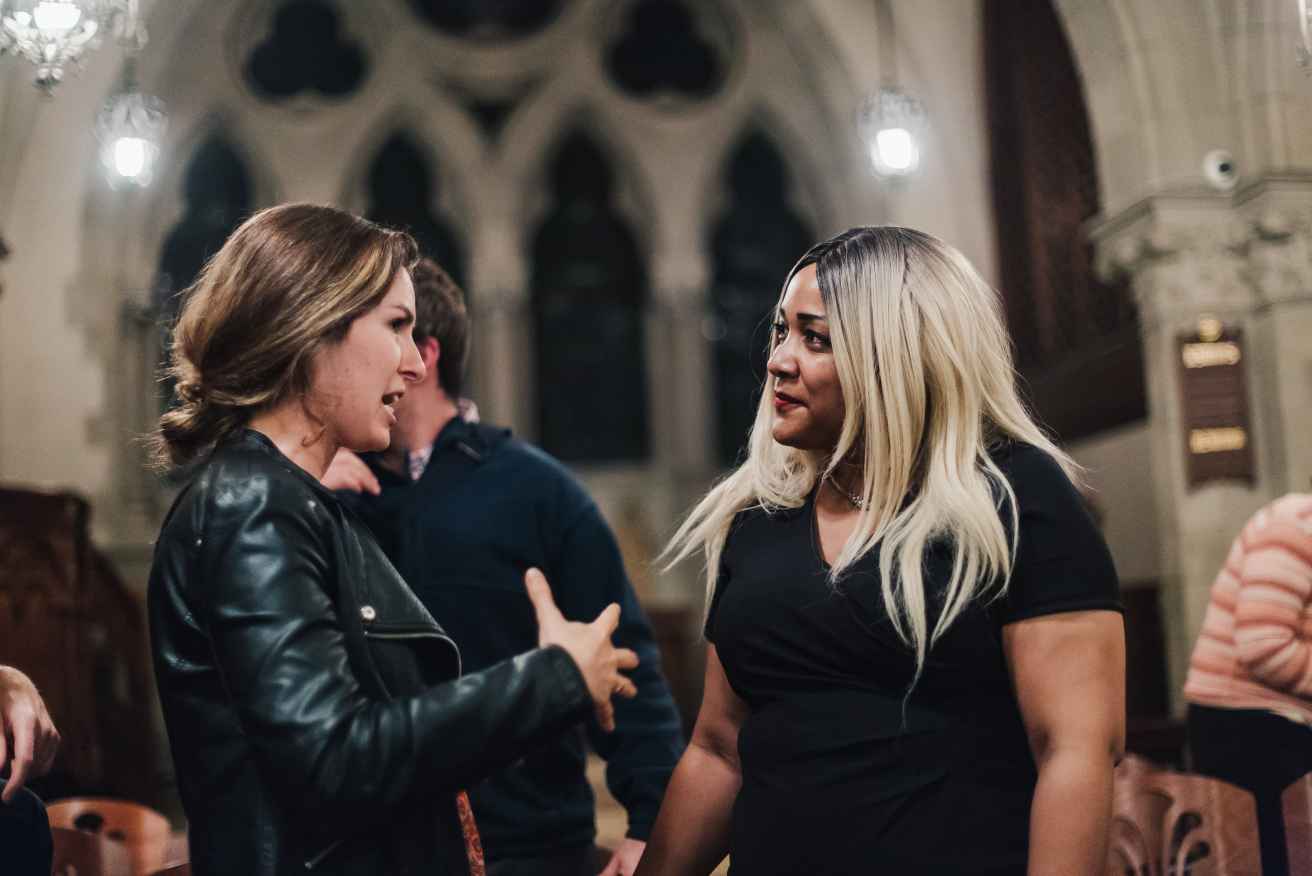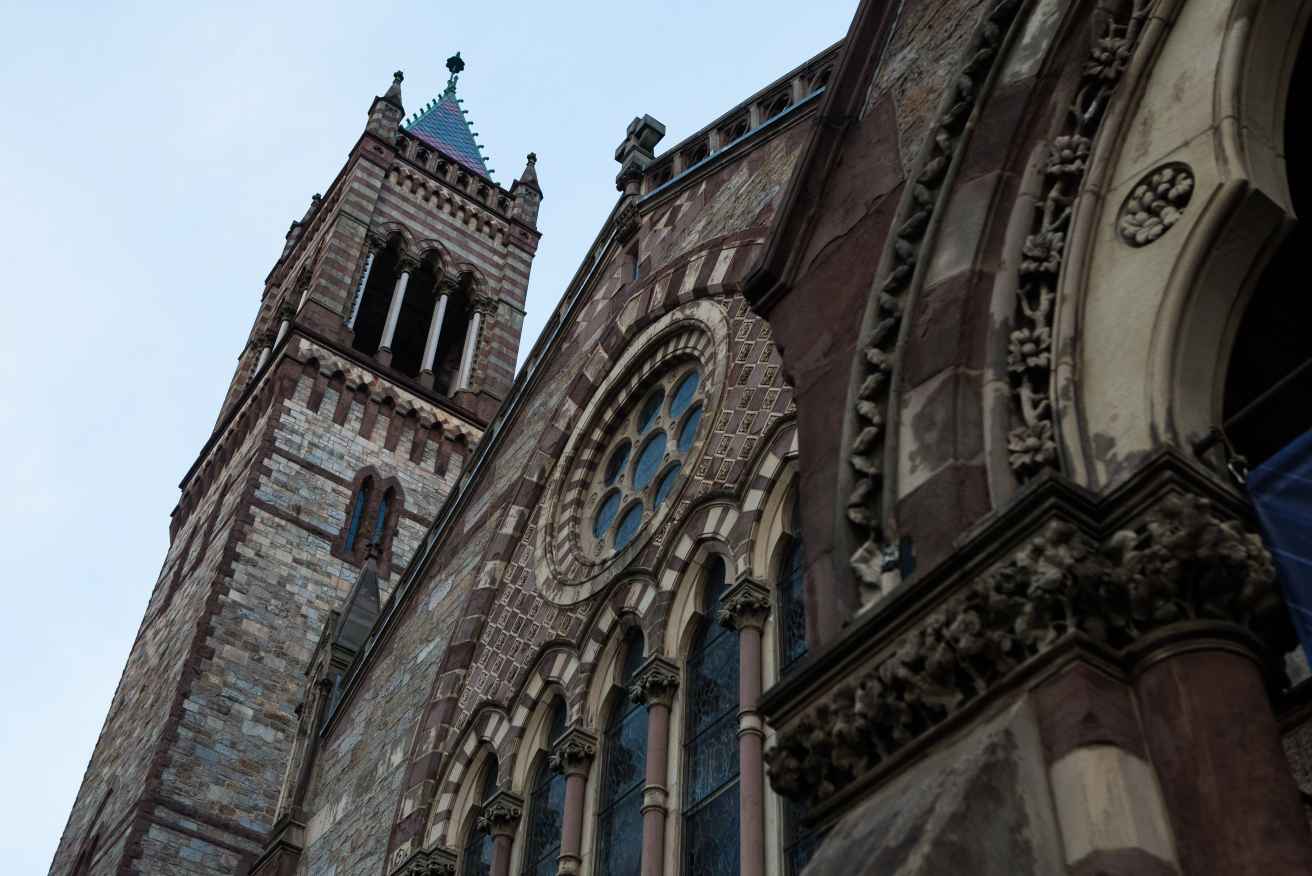Festival Worship - Fourteenth Sunday after Pentecost
Festival Worship - Fourteenth Sunday after Pentecost
Invasive Species
Transcript
If you go to the hills of Western Massachusetts in the springtime, and if you take a walk on some quiet dirt road, you might be lucky enough to see one of the rarest and most beautiful flowers out there: the pink ladyslipper. You’ll see two big, deep green leaves growing straight out of the ground. You’ll see a stalk coming up between them, maybe six inches or a foot tall. At the top, you’ll see that stem bend a little bit, and hanging from its tip, you’ll see a deep pink, oval-shaped blossom that looks, if you use your imagination, a little bit like a tiny slipper. You have to look hard to see them, because they usually grow in shady little hollows, but if you’re really lucky, you might even find a whole cluster, six or ten plants growing all together, each one with its plump, pink flower.
While you’re out looking for the ladyslipper, you might also happen across another rare and beautiful flower: the white trillium. Instead of two leaves at the base, this time you’ll see a set of three leaves coming out near the top of the stem. Right on top of those three leaves, you’ll see three pointed, white petals. Like the ladyslipper, the trillium sometimes grows in clusters; I’ve never seen more than four together, but if you’re lucky, you could see a dozen or two.
If you go hunting for ladyslippers and trillium, you have to look really hard. You have to be patient. You have to be lucky. But even if you are impatient, and unlucky, and even if you couldn’t tell a ladyslipper from a pine tree if was right under your nose, what you are sure to find on any dirt road or forest path is a scrubby green plant, about thigh-high, with triangular leaves and small, white, cross-shaped flowers. It’s not very showy, so you might not even notice it if you’re just walking by, especially if you have your eyes peeled for ladyslippers and trillium.
But you are sure to find it. If you step off the path and walk through a patch of this plant, you will know that you have done so. If you step on one of its stems or crush a leaf underfoot as you pass, you will know that you have done so, because you will smell a peculiar, pungent aroma that will cling to you for the rest of the day. And when you have smelled it, you will not be surprised if someone tells you the name of this plant ... It’s called garlic mustard.
Garlic mustard is well known among outdoorsy types. It is loved by practitioners of herbal medicine for its various salutary properties. They say if you grind up its roots and heat them in oil, you can make a good poultice to relieve chest congestion. They say if you mash its leaves with water, it makes an effective treatment for insect bites and stings. They say if you take it internally, it’s good for the respiratory system.
Garlic mustard is also loved by edible plant enthusiasts. Its leaves, flowers, and fruit can all be eaten, and it tastes about how it smells—a mild, garlicky, mustardy, oniony sort of flavor. I can tell you from personal experience that a mixed-green salad with a few garlic mustard leaves tossed in is particularly delicious ...
Garlic mustard is loved by the herbalists and the foragers. But the forest conservationists can’t stand the sight of it. Here’s why.
Garlic mustard, it turns out, is not native to New England. It is a Eurasian plant that made its way across the Atlantic as a culinary import. Once it was introduced in North America, the cat was out of the bag, and garlic mustard spread like wildfire. It is, in fact, classified as an invasive species in several states, including Massachusetts. Deer and other large herbivores don’t seem to like its taste, so it grows pretty much unchecked in woodlands and along roads and paths. It grows faster than native species; it survives disturbance better; it produces compounds that actually inhibit the growth of other plants nearby. It spreads inexorably and transforms the ecosystems with which it comes into contact. So if what you want is to preserve the status quo in the forest understory, then garlic mustard is not your friend.
But there’s another group of people who despise garlic mustard, perhaps even more vehemently than the conservationists. Who are they? Gardeners.
In addition to growing fast and squeezing out native species, garlic mustard is prolific and tenacious. A single plant can produce hundreds or even thousands of seeds in a given year. Those seeds spread where they please, without regard for where you planted your petunias, or your green beans, or your tomatoes. Those seeds stay viable in the soil for up to five years, waiting for the conditions to be right, biding their time until the opportune moment to spring forth right between your carefully-laid flagstones or in the middle of your award-winning pumpkin patch.
All of which is to say, garlic mustard takes its invasive species label seriously. Once it takes root, you will never get rid of it. You can try pulling it up; you can try cutting it down; you can try burning it; you can try spraying; you can try praying; but once it takes root, it is pretty much unstoppable. That garlicky, mustardy, oniony aroma will be there until the end of your days and beyond.
If you were to go to my hometown of Keene, New Hampshire, back when I was in high school, and if you were to make your way to the west side of town, to a World War II era neighborhood of saltbox capes with white clapboard siding, you might find your way to my family’s house. If you came to visit, we would invite you into our kitchen to sit at the sunny table by the picture window, looking out on the pine trees in the backyard. We would invite you into the kitchen, rather than the living room, because chances are that we would be in the middle of baking bread. The kitchen would be full of that warm, fermenty aroma, that smell that makes your mouth water and your heart soften.
My dad was the chief bread-baker in our family, and he approached the task with scientific precision. He had a basic recipe that worked pretty well, but he was always experimenting, tweaking this and that to see how it would change. He carefully measured the flour and the yeast, the salt and the water and the honey, and he kept meticulous notes on what he had done. This time, a half-cup more whole-wheat flour. Next time, a half-teaspoon less yeast. Another time, two tablespoons of oil. Extra kneading. Let it rise in the oven. Let it rise by the wood stove. Bake it hotter and shorter. Bake it cooler and longer.
He kept track of what he put into the dough, and he kept track of how he handled it, and he kept track of how it turned out. This time, too dry. Next time, too sticky. Another time, it didn’t rise nearly enough, and it came out of the oven like a dense, solid brick. He kept track of all these things—he even kept track of the weather conditions, the humidity and the temperature and the precipitation. And yet, no matter how meticulous his notes were, no matter how many factors he tried to track, the bread was never quite predictable. All those experiments let him come closer to the results he wanted, but he never pinned it down entirely. There always remained some element of wildness, of unpredictability.
Yeast is, after all, a rather mysterious thing. Just a couple of teaspoons is enough to leaven several cups of flour. There are things you can do to help it along—you can feed it and keep it warm and give it time to grow—but you can’t control it entirely. You might set it to rise and go off to do an errand, thinking you have plenty of time, only to return and find your counter overrun by sticky dough. Or maybe you’ve scheduled a dinner party, and you have everything carefully planned. The bread will come out at 6:45; the guests will arrive at 7:00; you will sit down to piping hot bowls of soup and fresh, warm, crusty slices of bread ... And then you might find that the yeast is taking its sweet time and the bread won’t be ready for another hour, and you and your guests are just going to have to wait. The yeast does not grow on your time frame, my dad will tell you. It is not concerned about being convenient. It has a pace of its own, as living things do, and although you can help it or hinder it, there always remains some element of mystery, of wildness, of unpredictability.
If you think that everybody loves the smell of baking bread, I think that you’re probably right. But in Jesus’ time, good as it might smell, yeast was a symbol of impurity, of uncleanness. At Passover, when they commemorated the Israelites’ hasty flight out of Egypt, all traces of leaven had to be removed from the house—the dishes scoured, the cupboards swept, and any leavened bread consumed or disposed of. Just the littlest bit of yeast was enough to contaminate a whole barrel of flour, because it was alive and unpredictable, and it might start growing and spreading like an invasive species.
No matter how carefully you measure or how meticulously you experiment, you can’t quite control it. And no matter how thoroughly you sweep and scour, you can’t scrub from your memory that yeasty, bready smell. It’s a smell that tells you something is happening, something good and nourishing. That earthy, homey aroma will be with you until the end of your days and beyond.
Jesus said, “What is the kingdom of God like? And to what should I compare it? It is like a mustard seed that someone took and sowed in the garden; it grew and became a tree, and the birds of the air made nests in its branches.” And again he said, “To what should I compare the kingdom of God? It is like yeast that a woman took and mixed in with three measures of flour until all of it was leavened.”
Because the search for ladyslippers and trillium makes it easy to overlook garlic mustard ... because the aisle full of Pepperidge Farm and Wonderbread makes it easy to forget the mysterious unpredictability of yeast ... because it is easy to miss the places where the kingdom of God is hidden right in plain sight ... I want to tell you now some of the places where I have seen it growing during my fifteen months with you here at Old South Church in Boston.
I have seen it in the faces of newcomers who join us at Jazz Worship and experience a whole new kind of church, an invitation into the wide embrace of God’s own heart.
I have heard it in the contagious laughter of the Young AdultsGroup, echoing down the stone stairwells from the fourth floor and making Nancy and Quinn wish that they were up there, too.
I have felt it growing when a person who lives on the street and a person who lives on Beacon Hill share a pew and a greeting and smile and a conversation and a prayer for one another’s children.
I have read it in the urgent sincerity of the prayers that visitors leave in our prayer box, a monument in pen and paper to the importance of this sanctuary in the city and its open doors.
I felt it very close indeed when 160 New Year’s Eve revelers filled the Gordon Chapel to welcome 2010 with jazz and communion and prayers for peace and new beginnings while noisemakers and firecrackers blared outside.
I have seen it in the quiet faithfulness of the Sunday morning Bible Study group, who open their hearts and their minds and their souls to one another and to God, week in and week out.
I have encountered it through a million little interactions in which I have witnessed your tenderness and care for one another and for this world. I have been blessed to be part of that circle of care over these past fifteen months, for which I am immensely grateful.
My time among you has taught me a great deal about just how good church can be. I am grateful to you for the wisdom you have shared, for the trust you have placed in me, and for the support you have offered as I have grown into this thing called ministry. Thank you.
I will miss you all dearly, and I will carry your faces and your stories and your love in my heart as you and I embark separately on the next stages of our journeys. I pray that your path and mine will lead us through fields of garlic mustard and kitchens full of baking bread, and that the sweet and pungent aroma of the unpredictable, mysterious, alive and growing, invasive species kingdom of God will be with us all to the end of our days and beyond.
Can you smell it?
Amen.
